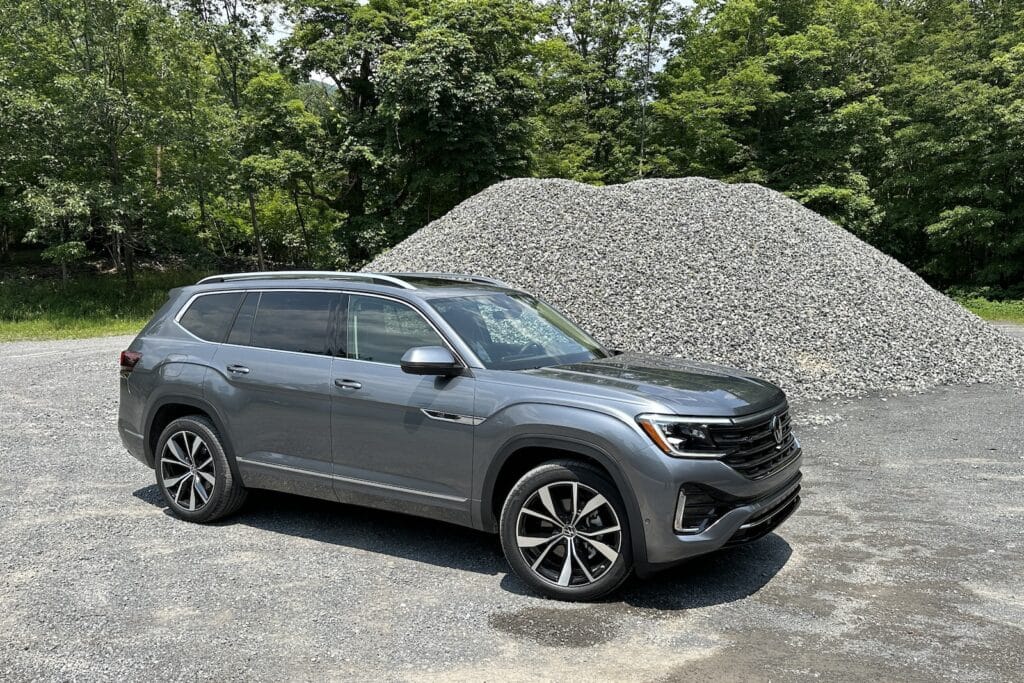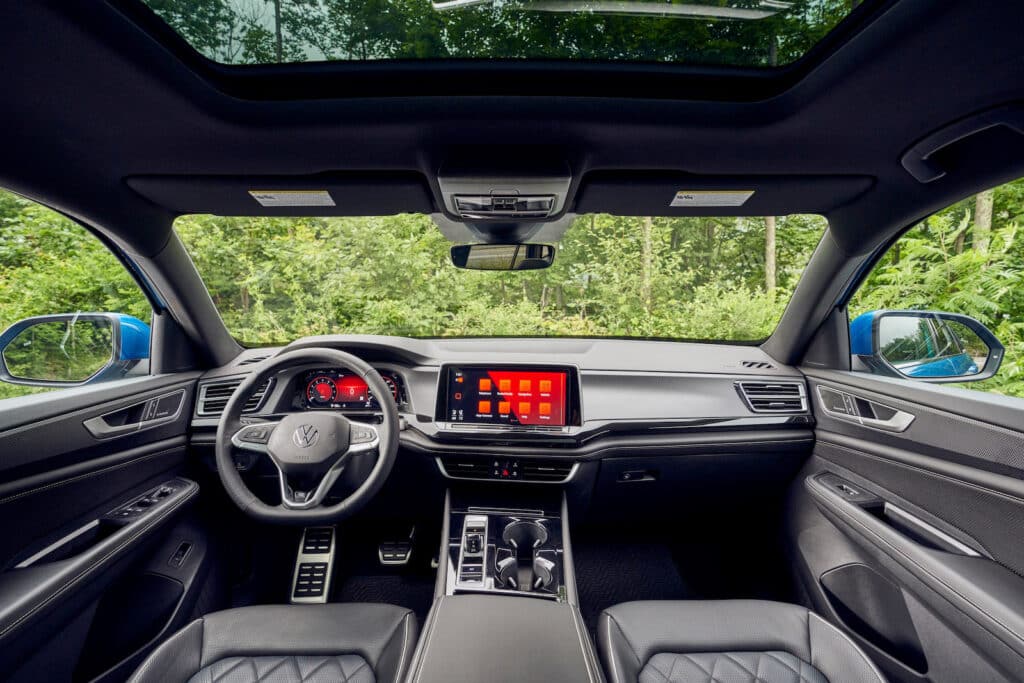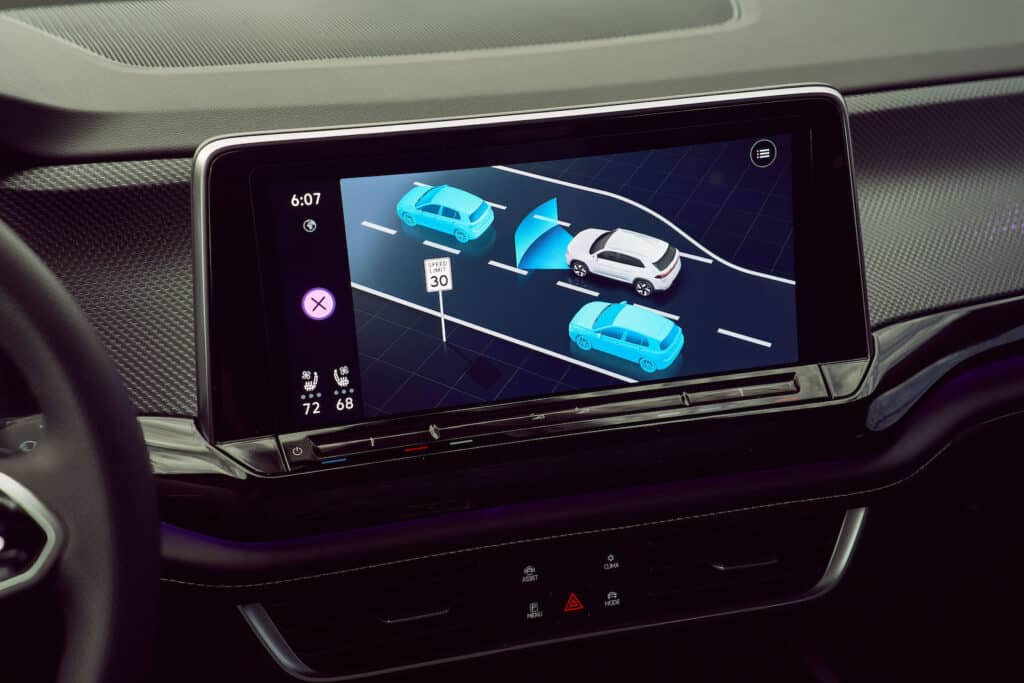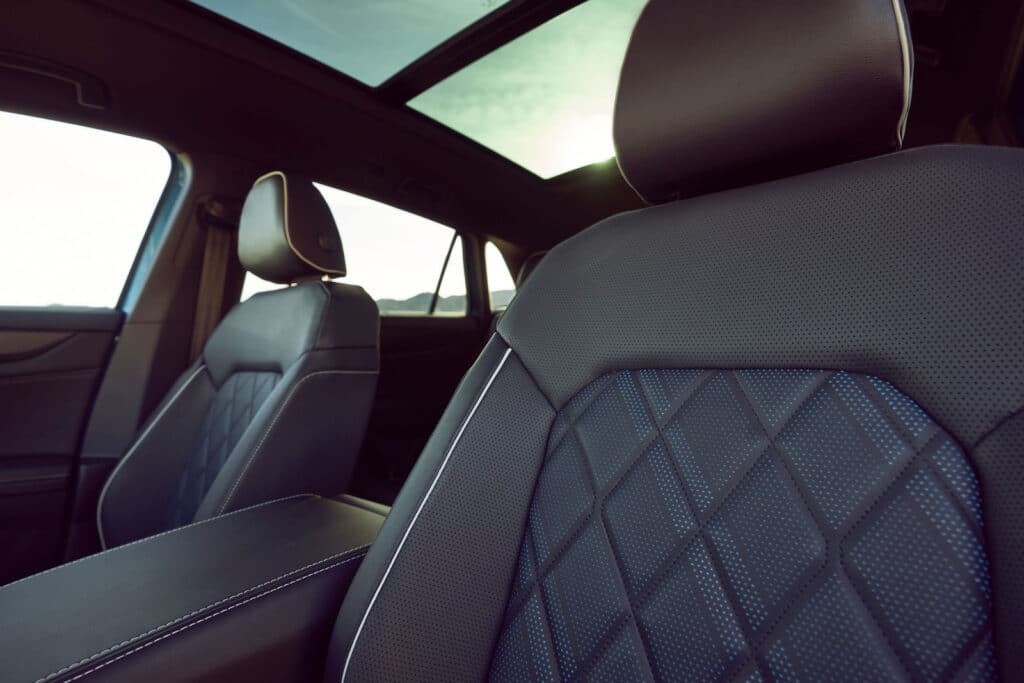First Drive: 2024 Volkswagen Atlas Cross Sport
When the first Volkswagen Atlas rolled into U.S. showrooms in 2016, it marked a turning point for the German automaker. Once known for popular sedans and coupes like the Beetle, Golf, GTI and Passat, VW failed to keep up with changing times that saw millions of Americans shift from passenger cars to SUVs and CUVs. It did have a couple in its line-up but the Touareg was too expensive, the Tiguan too small.

As the first Volkswagen SUV truly designed and engineered for U.S. buyers, the Atlas was that much-needed Goldilocks product. It was just right — especially as a second version, the slightly smaller Atlas Cross Sport, came to market in 2019.
Updated versions of the Atlas family are rolling out for the 2024 model year, and I got a chance to drive the 2024 Volkswagen Atlas Cross Sport on a winding course through New York’s scenic Catskill Mountains this past week. As I quickly discovered, the automaker has done an impressive job of adding new features, updating the crossover’s design and addressing some of the original model’s weaknesses.
Overview
Back in 2013, sedans, coupes and hatchbacks made up a full 91% of Volkswagen’s U.S. sales. It simply didn’t have the right products to keep up with the market’s rapid shift to sport- and crossover-utility vehicles. Not until the 2016 arrival of the three-row VW Atlas and the slightly smaller Atlas Cross Sport. Now, with other shifts to its product line-up, utility vehicles make up 83% of the brand’s U.S. sales.
And, if our first drive of the 2024 Volkswagen Atlas Cross Sport is any indication, VW could gain even more sales in the crossover category. While the ’24 model officially falls into the “midcycle update” category, the utility vehicle gets a number of notable tweaks, starting with new tech features, as well as some appealing design updates. The interior is essentially all-new for 2024.

The most significant changes come under the hood, however, where the entire 2024 Atlas family shifts to a single package, a torquey new 2.0-liter turbo-4 that replaces both the outgoing inline-4 and VR6 options. It’s generally quicker, smoother and more efficient.
Exterior
As the name implies, it’s meant to be a sportier version of the three-row Atlas. And, at first glance, you might have trouble telling them apart unless they’re standing side by side. The Cross Sport may share the same, 117.3-inch wheelbase but, at 195.5 inches, nose-to-tail, it’s 5.2 inches shorter. Width remains the same 78.4 inches, but the height of the two-row model drops 2.3 inches, to 67.8.
If anything, both models appear a bit bigger than their dimensions might suggest, with a pleasantly broad-shouldered stance.
The exterior changes with the 2024 update are modest but welcome. They start with new, adaptive headlamps, as well as an illuminated crossbeam atop the grille, along with a lighted logo that suggests the look of the all-electric Volkswagen ID.4. There’s a similar, lighted bar across the back end.

Interior
Here’s where the 2024 model received some of its most dynamic changes. It’s essentially an all-new cabin, the horizontal orientation helping to accent this already broad cabin. The overall feel is more luxurious and, in the R model I drove, VW added welcome details, starting with padding on the sides of the center console. Overall, there are more soft-touch surfaces and, on upper trims, wood accents and quilted leather seats.
The infotainment system features a wide, 12.5-inch display riding atop the center console. It’s paired with an easily readable 10.25-inch digital gauge cluster. For my tastes, however, the switch to an electronic slider, rather than a volume control knob, was a wrong move.
There are a number of details worth mentioning, including the double air vents on either side of the instrument panel. And, with a switch to an e-shifter, VW was able to open up storage space under that center console big enough for a woman’s purse.
There are a number of new standard features, such as an automatic climate control system, a heated steering wheel, ventilated front seats, and a height-adjustable passenger seat. There’s also a 30-color ambient lighting system.
While not quite as roomy as the three-row Atlas, with up to 96.6 cubic feet of storage space, the Atlas Cross Sport has plenty of room for up to five passengers, as well as their luggage.

Powertrain
For 2024, Volkswagen has cut the number of options available to Atlas and Atlas Cross Sport buyers. Indeed, there’s only one drivetrain available, a new, 2.0-liter turbo-4. It replaces the first-generation’s inline-4 and VR6 packages.
While that might seem a disappointment, at first, a closer look at the numbers, backed up by a drive, should dissuade any concerns. Mated to a silky smooth 8-speed automatic, the DOHC engine pushes out 269 horsepower and 273 pound-feet of torque. On paper, that’s 7 hp less than the old VR6 — but with 28% more torque you’ll likely not miss it.
All trims are available with all-wheel drive and the new engine will get you to 60 in a reasonably peppy 7.5 seconds. On the SE and SE with Tech models, you can opt for front-wheel drive, sacrificing about a tenth of a second. But FWD also gives you fuel economy of 20 mpg in the city, 27 highway and 23 combined. That’s 1 mpg more, in all columns, than with the AWD package.
Towing capacity is rated at a fairly beefy 5,000 pounds, and all versions but that base SE come with a standard tow hitch.
Safety and Technology
Along with the digital gauge and infotainment clusters, the 2024 Volkswagen Atlas Cross Sport expanded its array of technical features. That starts with a supply of readily accessible USB ports for both front- and rear-seat passengers. And that includes 45 watts of power permitting a rapid charge for smartphones and other digital devices.

The infotainment system now can be paired to smartphones wirelessly to use Apple CarPlay, Android Auto and MirrorLink, all standard. And the Volkswagen Travel Assist system includes an array of smart safety features, such as Lane Assist, Adaptive Cruise Control with Stop & Go, Forward Collision Warning, with Automatic Emergency Braking and Pedestrian Monitoring, Blind-Spot Monitor, Lane Keeping Assist, Exit Warning, Automatic Post-Collision Braking and Rear Cross-Traffic Alert.
There’s also an assortment of optional tech features, including Park Distance Control, an Overhead View Camera, Parking Steering Assist, and a Head-up Display,
Driving Impressions
There’s a notable difference in the driving experience between the original Atlas and smaller Atlas Cross Sport. It’s lighter, of course, and that was readily apparent flogging the SUV around the narrow, windy mountain roads cutting through the Catskills.
To be clear, there are more nimble options in this market segment, but the Cross Sport proved confidence inspiring, especially when switched into Sport mode using the infotainment display. It was quite tossable and seldom seemed to get upset, even on the well-worn and infrequently repaired roads that cut through New York’s back country.
The downside was an over-abundance of steering boost, even in Sport. I’d have clearly appreciated a bit more heft and direct feel in the steering system. But, considering the sort of family buyers that the Atlas family generally attracted, the route VW engineers took is understandable. I’m hoping they’ll retain the high steering boost in the Normal mode and recalibrate the Sport setting.
One of the more impressive aspects of the 2024 Atlas Cross Sport was the near silent interior. Even on the roughest road surfaces there was little noise. And that 8-speed automatic made things all the more pleasant on a long drive as shifts are almost imperceptible.
2024 Volkswagen Atlas Cross Sport Specifications
| Dimensions | L: 195.6 inches/W: 78.3 inches/H: 68.1 inches/Wheelbase: 117.3 inches |
| Weight | N/A |
| Powertrain | 2.0-liter turbocharged 4-cylinder engine, 8-speed automatic transmission and all-wheel drive |
| Fuel Economy | 19 mpg city/24 mpg highway/21 mpg combined |
| Performance Specs | 269 horsepower and 273 pound-feet of torque |
| Price | Base price: $36,715, including $1,350 destination charge. |
| On-Sale Date | Available shortly |
Wrap Up
There’s a reason why Volkswagen has become much more of an SUV brand than it was just a decade ago, and while other products have helped, the lion’s share of the credit goes to the two Atlas models.
For those who have a large family or other reasons to need a third row, the original Atlas should more than serve their needs. If you’re good with just two rows, the Atlas Cross Sport would be the one to consider as you improve fuel economy, performance and your overall road feel and handling.
The Cross Sport currently accounts for about 40% of total Atlas sales. Based on my experience with the 2024 model, that could climb a bit. But I expect VW to capture even more buyers for the overall Atlas family with the updates made for the coming year.
2024 Volkswagen Atlas Cross Sport — Frequently Asked Questions
Is the 2024 Volkswagen Atlas Cross Sport worth buying?
There are plenty of appealing reasons to consider the Volkswagen Atlas family, overall. You have two options to choose from, including the roomy three-row Atlas, and the slightly smaller — but more nimble — two row Atlas Cross Sport. Both are spacious and reasonably well-equipped, with a number of desirable updates made to the 2024 versions.
What are the changes made to the 2024 VW Atlas Cross Sport?
Both versions of the 2024 VW Atlas get a number of revisions, including modest exterior updates and a completely new interior. They get more standard features and a new powertrain package, a torquey 2.0-liter turbo replacing both the old inline-4 and VR6 engines.
Is the 2024 Volkswagen Atlas fuel efficient?
The front-wheel-drive version of the 2024 VW Atlas Cross Sport delivers up to 20 mpg in the city, 27 highway and 23 combined. In the all-wheel-drive version it gets up to 19 city, 26 highway and 22 combined. That’s pretty much midpack in its segment.
Auto Lovers Land
Comments
Post a Comment